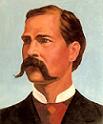Why are course ratings and slope not based on score data?
-
Recently Browsing 0 members
- No registered users viewing this page.
-
Our picks
-

2024 RBC Heritage - Discussion and Links to Photos
GolfWRX_Spotted posted a topic in Tour and Pre-Release Equipment,
Please put any questions or comments here
General Albums
2024 RBC Heritage - Monday #1
2024 RBC Heritage - Monday #2
WITB Albums
Justin Thomas - WITB - 2024 RBC Heritage
Justin Rose - WITB - 2024 RBC Heritage
Chandler Phillips - WITB - 2024 RBC Heritage
Nick Dunlap - WITB - 2024 RBC Heritage
Thomas Detry - WITB - 2024 RBC Heritage
Austin Eckroat - WITB - 2024 RBC Heritage
Pullout Albums
Wyndham Clark's Odyssey putter - 2024 RBC Heritage
JT's new Cameron putter - 2024 RBC Heritage
Justin Thomas testing new Titleist 2 wood - 2024 RBC Heritage
Cameron putters - 2024 RBC Heritage
Odyssey putter with triple track alignment aid - 2024 RBC Heritage
Scotty Cameron The Blk Box putting alignment aid/training aid - 2024 RBC Heritage
-
- 5 replies

Picked By
easyyy, -
-

2024 Masters - Discussion and Links to Photos
GolfWRX_Spotted posted a topic in Tour and Pre-Release Equipment,
Huge shoutout to our member Stinger2irons for taking and posting photos from Augusta
Tuesday
The Masters 2024 – Pt. 1
The Masters 2024 – Pt. 2
The Masters 2024 – Pt. 3
The Masters 2024 – Pt. 4
The Masters 2024 – Pt. 5
The Masters 2024 – Pt. 6
The Masters 2024 – Pt. 7
The Masters 2024 – Pt. 8
The Masters 2024 – Pt. 9
The Masters 2024 – Pt. 10
-
- 14 replies

Picked By
easyyy, -
-

Rory McIlroy testing a new TaylorMade "PROTO" 4-iron – 2024 Valero Texas Open
atursky posted a topic in Tour and Pre-Release Equipment,
Rory McIlroy testing a new TaylorMade "PROTO" 4-iron – 2024 Valero Texas Open-
-
- 92 replies

Picked By
easyyy, -
-

2024 Valero Texas Open - Discussion and Links to Photos
GolfWRX_Spotted posted a topic in Tour and Pre-Release Equipment,
Please put any questions or Comments here
General Albums
2024 Valero Texas Open - Monday #1
2024 Valero Texas Open - Tuesday #1
WITB Albums
Ben Taylor - WITB - 2024 Valero Texas Open
Paul Barjon - WITB - 2024 Valero Texas Open
Joe Sullivan - WITB - 2024 Valero Texas Open
Wilson Furr - WITB - 2024 Valero Texas Open
Ben Willman - SoTex PGA Section Champ - WITB - 2024 Valero Texas Open
Jimmy Stanger - WITB - 2024 Valero Texas Open
Rickie Fowler - WITB - 2024 Valero Texas Open
Harrison Endycott - WITB - 2024 Valero Texas Open
Vince Whaley - WITB - 2024 Valero Texas Open
Kevin Chappell - WITB - 2024 Valero Texas Open
Christian Bezuidenhout - WITB (mini) - 2024 Valero Texas Open
Scott Gutschewski - WITB - 2024 Valero Texas Open
Michael S. Kim WITB – 2024 Valero Texas Open
Pullout Albums
Cameron putter - 2024 Valero Texas Open
Ben Taylor with new Titleist TRS 2 wood - 2024 Valero Texas Open
Swag cover - 2024 Valero Texas Open
Greyson Sigg's custom Cameron putter - 2024 Valero Texas Open
Davis Riley's custom Cameron putter - 2024 Valero Texas Open
Josh Teater's custom Cameron putter - 2024 Valero Texas Open
Hzrdus T1100 is back - - 2024 Valero Texas Open
Mark Hubbard testing ported Titleist irons – 2024 Valero Texas Open
Tyson Alexander testing new Titleist TRS 2 wood - 2024 Valero Texas Open
Hideki Matsuyama's custom Cameron putter - 2024 Valero Texas Open
Cobra putters - 2024 Valero Texas Open
Joel Dahmen WITB – 2024 Valero Texas Open
Axis 1 broomstick putter - 2024 Valero Texas Open
Rory McIlroy testing a new TaylorMade "PROTO" 4-iron – 2024 Valero Texas Open
Rory McIlroy's Trackman numbers w/ driver on the range – 2024 Valero Texas Open
-
- 4 replies

Picked By
easyyy, -
-

2024 Texas Children's Houston Open - Discussion and links to Photos
GolfWRX_Spotted posted a topic in Tour and Pre-Release Equipment,
Please put any questions or Comments here
General Albums
2024 Texas Children's Houston Open - Monday #1
2024 Texas Children's Houston Open - Monday #2
2024 Texas Children's Houston Open - Tuesday #1
2024 Texas Children's Houston Open - Tuesday #2
2024 Texas Children's Houston Open - Tuesday #3
WITB Albums
Thorbjorn Olesen - WITB - 2024 Texas Children's Houston Open
Ben Silverman - WITB - 2024 Texas Children's Houston Open
Jesse Droemer - SoTX PGA Section POY - WITB - 2024 Texas Children's Houston Open
David Lipsky - WITB - 2024 Texas Children's Houston Open
Martin Trainer - WITB - 2024 Texas Children's Houston Open
Zac Blair - WITB - 2024 Texas Children's Houston Open
Jacob Bridgeman - WITB - 2024 Texas Children's Houston Open
Trace Crowe - WITB - 2024 Texas Children's Houston Open
Jimmy Walker - WITB - 2024 Texas Children's Houston Open
Daniel Berger - WITB(very mini) - 2024 Texas Children's Houston Open
Chesson Hadley - WITB - 2024 Texas Children's Houston Open
Callum McNeill - WITB - 2024 Texas Children's Houston Open
Rhein Gibson - WITB - 2024 Texas Children's Houston Open
Patrick Fishburn - WITB - 2024 Texas Children's Houston Open
Peter Malnati - WITB - 2024 Texas Children's Houston Open
Raul Pereda - WITB - 2024 Texas Children's Houston Open
Gary Woodland WITB (New driver, iron shafts) – 2024 Texas Children's Houston Open
Padraig Harrington WITB – 2024 Texas Children's Houston Open
Pullout Albums
Tom Hoge's custom Cameron - 2024 Texas Children's Houston Open
Cameron putter - 2024 Texas Children's Houston Open
Piretti putters - 2024 Texas Children's Houston Open
Ping putter - 2024 Texas Children's Houston Open
Kevin Dougherty's custom Cameron putter - 2024 Texas Children's Houston Open
Bettinardi putter - 2024 Texas Children's Houston Open
Cameron putter - 2024 Texas Children's Houston Open
Erik Barnes testing an all-black Axis1 putter – 2024 Texas Children's Houston Open
Tony Finau's new driver shaft – 2024 Texas Children's Houston Open
-
- 13 replies

Picked By
easyyy, -
-























Recommended Posts
Join the conversation
You can post now and register later. If you have an account, sign in now to post with your account.